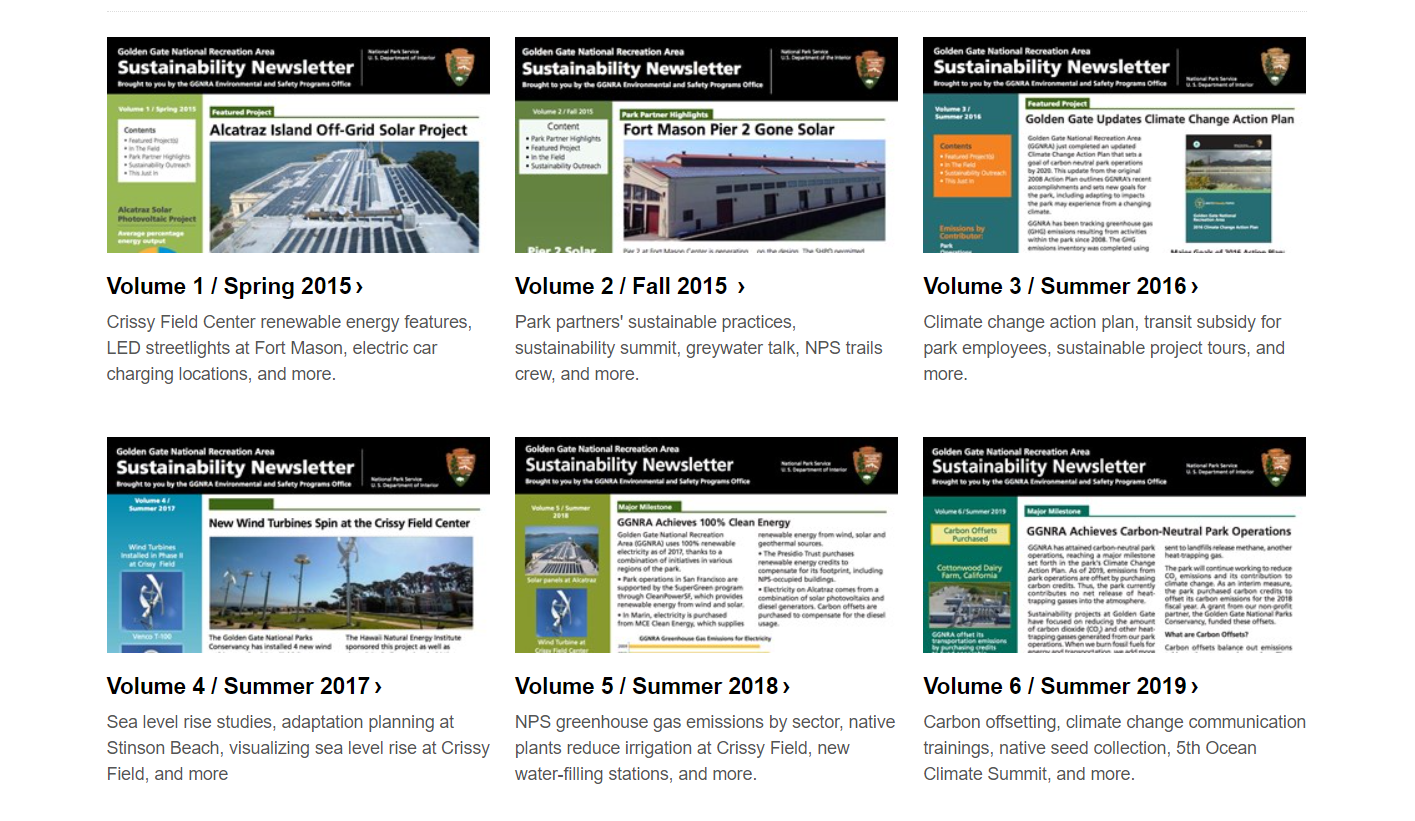|
Golden Gate National Recreation Area works to be part of the solution to climate change and helps visitors do the same. Our Climate Action Plan lays out GGNRA’s goals to take immediate, ambitious, and durable actions to address climate change. Our four main strategies include:

National Park Service Strategy 1: ReduceReduce fossil fuel emissions and conserve energy and water, achieving carbon-neutral park operations by 2025The first strategy includes GGNRA’s goals for reducing fossil fuel emissions from park operations and visitation. Actions in this category focus on the sectors that contribute the most to our carbon footprint: Energy, Transportation, and Waste. These types of actions are often referred to as climate mitigation actions.
Learn more about our park's sustainability programs here. 
National Park Service Strategy 2: EducateExpand climate change education and outreach, modeling the park’s sustainable actions to our staff and visitorsClimate change is a complex issue that the park can help communicate to the public. Combined with the park’s emission reductions, the greatest impact that GGNRA can have on mitigating climate change is through public education. With more than 17 million visitors to the park annually, we have the opportunity to amplify our impact beyond park boundaries by encouraging people to reduce emissions in their own lives. 
National Park Serice Strategy 3: AdaptPlan for and adapt to climate changeClimate change is causing increasing impacts to the park’s coastline, creeks, and rivers which in turn affects recreation, resources, and infrastructure. Increases in storm frequency and flooding along with hotter and drier summers put a strain on park operations and resources. Studies show that more extreme climate conditions will continue to increase in the future at Golden Gate National Recreation Area.Following guidance from the NPS publication Planning for a Changing Climate, the park is beginning to look at a range of future scenarios and adaptation strategies park-wide, particularly in our most vulnerable sites. The park evaluates climate vulnerability by assessing a site's exposure, sensitivity, and resilience, focusing on its ability to withstand, adapt to, and recover from impacts. The park will build internal capacity to engage in these adaptation planning processes, and also seek outside scientific and community expertise. 
National Park Service Strategy 4: Inspire and LeadInspire and motivate parkwide action on climate changeThe final strategy aims to increase parkwide action on climate change by integrating climate initiatives into every aspect of park operations, positioning GGNRA as a leader in the community and within the National Park Service.
GGNRA has been an innovator in many areas, including partnerships and community engagement. Its urban location, surrounded by diverse communities and resources, fosters creative problem-solvingThe park's climate change response has also benefited from the pioneering efforts of local communities in the San Francisco Bay Area, such as San Francisco's curbside composting initiative started in 2009 and Marin County's Community Choice Energy Program, launched in 2010. GGNRA has built on these initiatives to achieve numerous accomplishments. In this Climate Action Plan, we aim to generate momentum for even greater achievements, inspiring further action toward our ambitious carbon reduction goals. This strategy ensures that CAP implementation remains a top priority and that climate actions are fully integrated into park operations. 
Learn moreSustainability is important to us. Learn more by diving into our Sustainability Newsletters. |
Last updated: September 9, 2024
